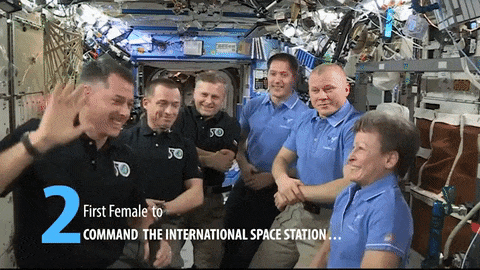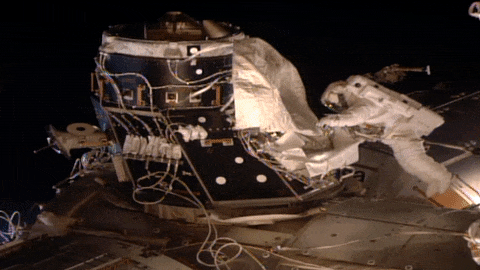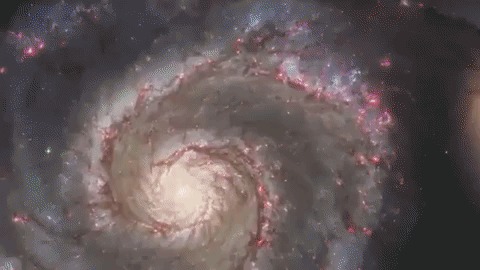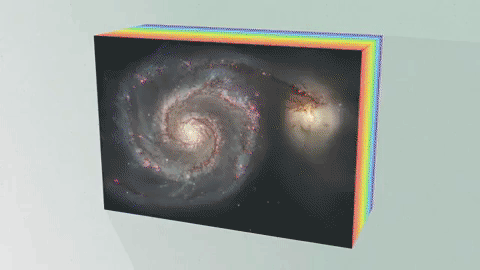Wispy Remains Of A Supernova Explosion Hide A Possible 'survivor.' Of All The Varieties Of Exploding

Wispy remains of a supernova explosion hide a possible 'survivor.' Of all the varieties of exploding stars, the ones called Type Ia are perhaps the most intriguing. Their predictable brightness lets astronomers measure the expansion of the universe, which led to the discovery of dark energy. Yet the cause of these supernovae remains a mystery. Do they happen when two white dwarf stars collide? Or does a single white dwarf gorge on gases stolen from a companion star until bursting? If the second theory is true, the normal star should survive. Astronomers used the Hubble Space Telescope to search the gauzy remains of a Type Ia supernova in a neighboring galaxy called the Large Magellanic Cloud. They found a sun-like star that showed signs of being associated with the supernova. Further investigations will be needed to learn if this star is truly the culprit behind a white dwarf's fiery demise.
This supernova remnant is located 160,000 light-years from Earth. The actual supernova remnant is the irregular shaped dust cloud, at the upper center of the image. The gas in the lower half of the image and the dense concentration of stars in the lower left are the outskirts of a star cluster.
Image credit: NASA, ESA and H.-Y. Chu (Academia Sinica, Taipei)
More Posts from Nasa and Others
Five Times Astronaut Peggy Whitson Made History
On April 24, 2017, NASA Astronaut Peggy Whitson established the new record for the most time spent in space by an American astronaut. She’s spent more than 76 weeks of her life floating in microgravity! It’s not the first time in her career at NASA that Whitson has established new milestones: here are just a few.

First NASA Science Officer
Peggy Whitson was the named the first NASA Science Officer aboard the space station in 2002. The position was created to work with the United States research community to understand and meet the requirements and objectives of each space station experiment.

First Female to Command the Space Station… Twice
Whitson became the first female to command the space station during Expedition 16 in 2008. Then Whitson became the first female to command the station twice during her current mission on April 9, 2017.

First Female Chief of the Astronaut Office
In 2009, Whitson became the first female and first non-pilot to achieve the most senior position for active astronauts, Chief of the Astronaut Office.

Most Spacewalks for a Female
On March 30, 2017, Peggy Whitson broke the record for most spacewalks and most time spent spacewalking for female astronauts. Suni Williams had previously held the record at 7 spacewalks.

Most Time In Space By A NASA Astronaut
At 1:27 a.m. ET on April 24, Peggy Whitson set the new record for cumulative time spent in space by an American astronaut. Jeff Williams previously set the record in 2016.
Make sure to follow us on Tumblr for your regular dose of space: http://nasa.tumblr.com
What is an upcoming project/mission you're most excited for?
It is likely that I’ll be assigned a mission to the International Space Station (ISS) within the next few years. We’ve had a continuous presence on the Space Station for 17 years now, along with our international partners (Russian Space Agency, European Space Agency, Japanese Space Agency, and Canadian Space Agency). Missions on the ISS typically last 6 months. I’m incredibly excited to contribute to the impressive array of scientific experiments that we are conducting every day on ISS (I am a scientist after all!), and very much look forward to the potential of going for a spacewalk and gaining that perspective of gazing down on the fragile blue ball that is our home from above. Beyond that, being part of test missions on the Orion spacecraft (currently under construction at NASA!) would be an extraordinary opportunity. The current NASA plan is to send astronauts in Orion in a mission that will go 40,000 miles beyond the Moon in the early 2020s, reaching a distance further than that ever travelled by humans. I’d certainly be game for that!
out of all the roles you've had in the past, which one do you feel has best prepared you to be a flight director?
Global Temperature by the Numbers
The Year
4th Hottest
2018 was the fourth hottest year since modern recordkeeping began. NASA and the National Oceanic and Atmospheric Administration work together to track temperatures around the world and study how they change from year to year. For decades, the overall global temperature has been increasing.

Over the long term, world temperatures are warming, but each individual year is affected by things like El Niño ocean patterns and specific weather events.
1.5 degrees
Globally, Earth’s temperature was more than 1.5 degrees Fahrenheit warmer than the average from 1951 to 1980.

The Record
139 years
Since 1880, we can put together a consistent record of temperatures around the planet and see that it was much colder in the late-19th century. Before 1880, uncertainties in tracking global temperatures were too large. Temperatures have increased even faster since the 1970s, the result of increasing greenhouse gases in the atmosphere.

Five Hottest
The last five years have been the hottest in the modern record.

6,300 Individual Observations
Scientists from NASA use data from 6,300 weather stations and Antarctic research stations, together with ship- and buoy-based observations of sea surface temperatures to track global temperatures.

The Consequences
605,830 swimming pools
As the planet warms, polar ice is melting at an accelerated rate. The Greenland and Antarctic ice sheets lost about 605,830 Olympic swimming pools (400 billion gallons) of water between 1993 and 2016.

8 inches
Melting ice raises sea levels around the world. While ice melts into the ocean, heat also causes the water to expand. Since 1880, sea levels around the world have risen approximately 8 inches.

71,189 acres burned
One symptom of the warmer climate is that fire seasons burn hotter and longer. In 2018, wildfires burned more than 71,189 acres in the U.S. alone.

46% increase in CO2 levels
CO2 levels have increased 46 percent since the late 19th Century, which is a dominant factor causing global warming.

Tools of the Trade: How Parker Solar Probe Will Study the Sun
Our Parker Solar Probe will get closer to the Sun than any spacecraft has ever gone – it will fly right through the Sun's corona, part of the Sun's atmosphere.

This spacecraft is full of cutting-edge technology, from its heat shield down to its guidance and control systems. It also carries four suites of advanced instruments designed to study the Sun in a multitude of ways.
1. Measuring particles
Two of Parker Solar Probe's instrument suites are focused on measuring particles – electrons and ions – within the corona.
One of these particle-measuring instrument suites is SWEAP (Solar Wind Electrons Alphas and Protons). SWEAP counts the most common particles in the solar wind – the Sun's constant outflow of material – and measures their properties, like velocity, density and temperature. Gathering this information about solar wind particles will help scientists better understand why the solar wind reaches supersonic speeds and exactly which part of the Sun the particles come from.

One instrument in the SWEAP suite is the Solar Probe Cup. Most of the instruments on Parker Solar Probe stay safe and cool in the shadow of the heat shield, but the Solar Probe Cup is one of the few that sticks out. That's so it can capture and measure particles streaming straight out from the Sun, and it had to go through some intense testing to get ready for this position in the Sun's incredibly hot corona.

Credit: Levi Hutmacher/Michigan Engineering
The ISʘIS suite (pronounced EE-sis, and including the symbol for the Sun in its acronym) also measures particles. ISʘIS is short for Integrated Science Investigation of the Sun, and this instrument suite measures particles that move faster – and therefore have more energy – than the solar wind.
These measurements will help scientists understand these particles' lifecycles – where they came from, how they got to be traveling so fast (these particles can reach speeds more than half the speed of light!) and what path they take as they travel away from the Sun and into interplanetary space.

2. Taking pictures – but not of the Sun's surface.
WISPR (Wide-Field Imager for Parker Solar Probe) has the only two cameras on Parker Solar Probe – but they're not pointed directly at the Sun. Instead, WISPR looks out the side of the spacecraft, in the direction it's traveling, looking at the space Parker Solar Probe is about to fly through. From that vantage point, WISPR captures images of structures within the corona like coronal mass ejections, or CMEs. CMEs are clouds of solar material that occasionally explode from the Sun at millions of miles per hour. Because this solar material is magnetized, CMEs can trigger geomagnetic storms when they reach Earth – which, in turn, can cause effects like auroras and even, in extreme cases, power outages.

Right now, our observations of events like these come from satellites orbiting near Earth, so WISPR will give us a whole new perspective. And, scientists will be able to combine WISPR's images with Parker Solar Probe's direct particle measurements to get a better idea of how these structures change as they travel.

3. Studying electric & magnetic fields
The FIELDS instrument suite is appropriately named: It's what scientists will use to study the electric and magnetic fields in the corona.
Electric and magnetic fields are key to understanding what happens, not only on the Sun, but throughout space, because they are the primary driver accelerating charged particles. In particular, a process called magnetic reconnection – when magnetic field lines explosively realign, sending particles rocketing away at incredible speeds – is thought to drive solar explosions, as well as space weather effects on Earth, like the aurora.

FIELDS measures electric and magnetic field at high time resolution, meaning it takes lots of measurements in a short amount of time, to track these processes and shed some light on the mechanics underlying the Sun's behavior. FIELDS' measurements are precisely synced up with those of the SWEAP suite (one of the sets of instruments studying particles) so that scientists can match up the immediate effects that electric and magnetic fields have on the material of the solar wind.

Parker Solar Probe launches summer 2018 on its mission to study the Sun. Keep up with the latest on the mission at nasa.gov/solarprobe or follow us on Twitter and Facebook.
Make sure to follow us on Tumblr for your regular dose of space: http://nasa.tumblr.com.
2016: This Year at NASA!
As 2016 comes to a close and prospects of the new year loom before us, we take a moment to look back at what we’ve accomplished and how it will set us ahead in the year to come.

2016 marked record-breaking progress in our exploration activities. We advanced the capabilities needed to travel farther into the solar system while increasing observations of our home and the universe, learning more about how to continuously live and work in space and, or course, inspiring the next generation of leaders to take up our journey to Mars and make their own discoveries.
Here are a few of the top NASA stories of 2016...
International Space Station
One Year Mission…completed!

NASA astronaut Scott Kelly and Russian cosmonaut Mikhail Kornienko returned to Earth after spending a year in space. Testing the limits of human research, findings from their One Year Mission will help send humans farther into space than ever before.
Commercial Resupply

Commercial partners Orbital ATK and SpaceX delivered tons (yes literally tons) of cargo to the International Space Station. This cargo supported hundreds of science experiments and technology demonstrations crucial to our journey to Mars.
Mars
Expandable Habitats

The Bigelow Expandable Activity Module (BEAM) was one of the technology demonstrations delivered to the space station in April. Expandable habitats greatly decrease the amount of transport volume for future space missions.
Booster Test Firing

In June, a booster for our Space Launch System (SLS) rocket successfully fired up. It will be used on the first un-crewed test flight of SLS with the Orion spacecraft in 2018. Eventually, this rocket and capsule will carry humans into deep space and one day…Mars!
InSight

This year we updated the milestones for our InSight mission with a new target launch window beginning in May 2018. This mission will place a fixed science outpost on Mars to study its deep interior. Findings and research from this project will address one of the most fundamental questions we have about the planetary and solar system science…how in the world did these rocky planets form?
Solar System and Beyond
Juno

On July 4, our Juno spacecraft arrived at Jupiter. This mission is working to improve our understanding of the solar system’s beginnings by revealing the origin and evolution of Jupiter.
OSIRIS-REx

In September, we launched our OSIRIS-REx spacecraft…which is America’s first-ever asteroid sample return mission. This spacecraft will travel to a near-Earth asteroid, called Bennu, where it will collect a sample to bring back to Earth for study.
James Webb Space Telescope

In February, the final primary mirror segment of our James Webb Space Telescope was installed. This will be the world’s most powerful space telescope ever, and is scheduled to launch in 2018. Webb will look back in time, studying the very first galaxies ever formed.
Kepler

In May, our Kepler mission verified the discovery of 1,284 new planets. Kepler is the first NASA mission to find potentially habitably Earth-sized planets.
Earth Right Now
Earth Expeditions

Our efforts to improve life on Earth included an announcement in March of a collection of Earth Science field campaigns to study how our planet is changing. These Earth Expeditions sent scientists to places like the edge of the Greenland ice sheet to the coral reefs of the South Pacific to delve into challenging questions about how our planet is changing…and what impacts humans are having on it.
Small Satellites

In November, we announced plans to launch six next-generation Earth-observing small satellite missions. One uses GPS signals to measure wind in hurricanes and tropical systems in greater detail than ever before.
Aeronautics Research
Our efforts in 2016 to make air travel cleaner, safer and quieter included new technology to improve safety and efficiency of aircraft arrivals, departures and service operations.
X-Plane

In June, we highlighted our first designation of an experimental airplane, or X-plane, in a decade. It will test new electric propulsion technology.
Drone Technolgy

In October, we evaluated a system being developed for the Federal Aviation Administration to safely manage drone air traffic.
Technology
Electric Propulsion

We selected Aerojet Rocketdyne to develop and advanced electric propulsion system to enable deep space travel to an asteroid and Mars.
Spinoffs

Our technology transfer program continued to share the agency’s technology with industry, academia and other government agencies at an unprecedented rate.
Centennial Challenges

Our Centennial Challenges program conducted four competition events in 2016 to spark innovation and enable solutions in important technology focus areas.
Watch the full video recap of ‘This Year @NASA’ here:
Make sure to follow us on Tumblr for your regular dose of space: http://nasa.tumblr.com
How Do Space Telescopes Break Down Light?
Space telescopes like Hubble and our upcoming James Webb Space Telescope use light not only to create images, but can also break light down into individual colors (or wavelengths). Studying light this way can give us a lot of detail about the object that emitted that light. For example, studying the components of the light from exoplanets can tell us about its atmosphere’s color, chemical makeup, and temperature. How does this work?
Remember the primary colors you learned about in elementary school?
Those colors are known as the pigment or subtractive colors. Every other color is some combination of the primary colors: red, yellow, and blue.

Light also has its own primary colors, and they work in a similar way. These colors are known as additive or light colors.

TVs make use of light’s colors to create the pictures we see. Each pixel of a TV screen contains some amount of red, green and blue light. The amount of each light determines the overall color of the pixel. So, each color on the TV comes from a combination of the primary colors of light: red, green and blue.

Space telescope images of celestial objects are also a combination of the colors of light.

Every pixel that is collected can be broken down into its base colors. To learn even more, astronomers break the red, green and blue light down into even smaller sections called wavelengths.
This breakdown is called a spectrum.

With the right technology, every pixel of light can also be measured as a spectrum.

Images show us the big picture, while a spectrum reveals finer details. Astronomers use spectra to learn things like what molecules are in planet atmospheres and distant galaxies.

An Integral Field Unit, or IFU, is a special tool on the James Webb Space Telescope that captures images and spectra at the same time.

The IFU creates a unique spectrum for each pixel of the image the telescope is capturing, providing scientists with an enormous amount of valuable, detailed data. So, with an IFU we can get an image, many spectra and a better understanding of our universe.
Watch the full video where this method of learning about planetary atmospheres is explained:
The James Webb Space Telescope is our upcoming infrared space observatory, which will launch in 2021. It will spy the first galaxies that formed in the universe and shed light on how galaxies evolve, how stars and planetary systems are born and tell us about potentially habitable planets around other stars.
To learn more about NASA’s James Webb Space Telescope, visit the website, or follow the mission on Facebook, Twitter and Instagram.
Text and graphics credit: Space Telescope Science Institute
Make sure to follow us on Tumblr for your regular dose of space: http://nasa.tumblr.com.
As an astronaut who has been on a spacewalk before, what does the all-woman spacewalk mean to you?
Who Was Mary W. Jackson?

On June 24, 2020, NASA announced the agency’s headquarters building in Washington, D.C., was to be named after Mary W. Jackson, the first African American female engineer at NASA.
Jackson’s story — along with those of her colleagues Katherine Johnson, Dorothy Vaughan, and Christine Darden — was popularized with the release of the “Hidden Figures” movie, based on Margot Lee Shetterly’s book by the same name.
Today, as the accomplishments of these women are brought to light, we celebrate them as Modern Figures — hidden no longer. Despite their recent recognition, we cannot forget the challenges that women and BIPOC faced and continue to face in the STEM fields.

Background
Jackson showed talent for math and science at an early age. She was born in 1921 in Hampton, Virginia, and attended the all-Black George P. Phenix Training School where she graduated with honors. She graduated from Hampton Institute (now Hampton University) in 1942 with a bachelor of science degree in both mathematics and physical sciences.
Jackson worked several jobs before arriving at the National Advisory Committee on Aeronautics (NACA), the precursor organization to NASA. She was a teacher, a receptionist, and a bookkeeper — in addition to becoming a mother — before accepting a position with the NACA Langley Aeronautical Laboratory’s segregated West Area Computers in 1951, where her supervisor was Dorothy Vaughan.

Accomplishments
After two years in West Computing, Jackson was offered a computing position to work in the 4-foot by 4-foot Supersonic Pressure Tunnel. She was also encouraged to enter a training program that would put her on track to become an engineer — however, she needed special permission from the City of Hampton to take classes in math and physics at then-segregated Hampton High School.
She completed the courses, earned the promotion, and in 1958 became NASA’s first African-American female engineer. That same year, she co-authored her first report, “Effects of Nose Angle and Mach Number on Transition on Cones at Supersonic Speeds.” By 1975, she had authored or co-authored 12 NACA and NASA technical publications — most focused on the behavior of the boundary layer of air around an airplane.

Legacy
Jackson eventually became frustrated with the lack of management opportunities for women in her field. In 1979, she left engineering to become NASA Langley’s Federal Women’s Program Manager to increase the hiring and promotion of NASA’s female mathematicians, engineers, and scientists.
Not only was she devoted to her career, Jackson was also committed to the advancement of her community. In the 1970s, she helped the students in the Hampton King Street Community Center build their own wind tunnel and run experiments. She and her husband Levi took in young professionals in need of guidance. She was also a Girl Scout troop leader for more than three decades.
Jackson retired from Langley in 1985. Never accepting the status quo, she dedicated her life to breaking barriers for minorities in her field. Her legacy reminds us that inclusion and diversity are needed to live up to NASA’s core values of teamwork and excellence.

Make sure to follow us on Tumblr for your regular dose of space: http://nasa.tumblr.com.
A Hitchhiker’s Ride to Space
This month, we are set to launch the latest weather satellite from the National Oceanic and Atmospheric Administration (NOAA). The Joint Polar Satellite System-1, or JPSS-1, satellite will provide essential data for timely and accurate weather forecasts and for tracking environmental events such as forest fires and droughts.

Image Credit: Ball Aerospace
JPSS-1 is the primary satellite launching, but four tiny satellites will also be hitchhiking a ride into Earth orbit. These shoebox-sized satellites (part of our CubeSat Launch Initiative) were developed in partnership with university students and used for education, research and development. Here are 4 reasons why MiRaTA, one of the hitchhikers, is particularly interesting…

Miniaturized Weather Satellite Technology
The Microwave Radiometer Technology Acceleration (MiRaTA) CubeSat is set to orbit the Earth to prove that a small satellite can advance the technology necessary to reduce the cost and size of future weather satellites. At less than 10 pounds, these nanosatellites are faster and more cost-effective to build and launch since they have been constructed by Principal Investigator Kerri Cahoy’s students at MIT Lincoln Laboratory (with lots of help). There’s even a chance it could be put into operation with forecasters.

The Antenna? It’s a Measuring Tape
That long skinny piece coming out of the bottom right side under MiRaTA’s solar panel? That’s a measuring tape. It’s doubling as a communications antenna. MiRaTA will measure temperature, water vapor and cloud ice in Earth’s atmosphere. These measurements are used to track major storms, including hurricanes, as well as everyday weather. If this test flight is successful, the new, smaller technology will likely be incorporated into future weather satellites – part of our national infrastructure.

Tiny Package Packing a Punch MiRaTA will also test a new technique using radio signals received from GPS satellites in a higher orbit. They will be used to measure the temperature of the same volume of atmosphere that the radiometer is viewing. The GPS satellite measurement can then be used for calibrating the radiometer. “In physics class, you learn that a pencil submerged in water looks like it’s broken in half because light bends differently in the water than in the air,” Principal Investigator Kerri Cahoy said. “Radio waves are like light in that they refract when they go through changing densities of air, and we can use the magnitude of the refraction to calculate the temperature of the surrounding atmosphere with near-perfect accuracy and use this to calibrate a radiometer.”

What’s Next?
In the best-case scenario, three weeks after launch MiRaTA will be fully operational, and within three months the team will have obtained enough data to study if this technology concept is working. The big goal for the mission—declaring the technology demonstration a success—would be confirmed a bit farther down the road, at least half a year away, following the data analysis. If MiRaTA’s technology validation is successful, Cahoy said she envisions an eventual constellation of these CubeSats orbiting the entire Earth, taking snapshots of the atmosphere and weather every 15 minutes—frequent enough to track storms, from blizzards to hurricanes, in real time.
Learn more about MiRaTA
Watch the launch!

The mission is scheduled to launch this month (no sooner than Nov. 14), with JPSS-1 atop a United Launch Alliance (ULA) Delta II rocket lifting off from Space Launch Complex 2 at Vandenberg Air Force Base in California. You’ll be able to watch on NASA TV or at nasa.gov/live.

Watch the launch live HERE on Nov. 14, liftoff is scheduled for Tuesday, 4:47 a.m.!
Make sure to follow us on Tumblr for your regular dose of space: http://nasa.tumblr.com.
-
 screechingfunnyquoteshero liked this · 1 year ago
screechingfunnyquoteshero liked this · 1 year ago -
 niceandhot-blog liked this · 3 years ago
niceandhot-blog liked this · 3 years ago -
 shy-starlight-student liked this · 4 years ago
shy-starlight-student liked this · 4 years ago -
 epic-flight reblogged this · 4 years ago
epic-flight reblogged this · 4 years ago -
 witchydiabetic liked this · 4 years ago
witchydiabetic liked this · 4 years ago -
 cosmosunknow liked this · 4 years ago
cosmosunknow liked this · 4 years ago -
 porcelainrobot liked this · 4 years ago
porcelainrobot liked this · 4 years ago -
 coma-ntem liked this · 5 years ago
coma-ntem liked this · 5 years ago -
 theblondprincess reblogged this · 5 years ago
theblondprincess reblogged this · 5 years ago -
 theblondprincess liked this · 5 years ago
theblondprincess liked this · 5 years ago -
 larabb22 liked this · 5 years ago
larabb22 liked this · 5 years ago -
 tsaiming-liang liked this · 5 years ago
tsaiming-liang liked this · 5 years ago -
 rivermusic liked this · 5 years ago
rivermusic liked this · 5 years ago -
 summerainlover reblogged this · 5 years ago
summerainlover reblogged this · 5 years ago -
 i-s-r-a-a liked this · 5 years ago
i-s-r-a-a liked this · 5 years ago -
 redscissorsjsjsjs liked this · 6 years ago
redscissorsjsjsjs liked this · 6 years ago -
 selma-unal-blog liked this · 6 years ago
selma-unal-blog liked this · 6 years ago -
 moondiem liked this · 6 years ago
moondiem liked this · 6 years ago -
 ath108 liked this · 6 years ago
ath108 liked this · 6 years ago -
 hoda-m reblogged this · 6 years ago
hoda-m reblogged this · 6 years ago -
 rouguihali liked this · 6 years ago
rouguihali liked this · 6 years ago -
 mymomlookslikeanangel reblogged this · 6 years ago
mymomlookslikeanangel reblogged this · 6 years ago -
 basantali75 reblogged this · 6 years ago
basantali75 reblogged this · 6 years ago -
 khaledxamoura reblogged this · 6 years ago
khaledxamoura reblogged this · 6 years ago -
 khaledxamoura liked this · 6 years ago
khaledxamoura liked this · 6 years ago -
 cosmicinsightz reblogged this · 6 years ago
cosmicinsightz reblogged this · 6 years ago -
 capillarywavesss reblogged this · 6 years ago
capillarywavesss reblogged this · 6 years ago -
 capillarywavesss liked this · 6 years ago
capillarywavesss liked this · 6 years ago -
 kepzeletvilaga reblogged this · 6 years ago
kepzeletvilaga reblogged this · 6 years ago -
 cool-kids-cant-be-dead liked this · 6 years ago
cool-kids-cant-be-dead liked this · 6 years ago -
 urielfoubad13 liked this · 6 years ago
urielfoubad13 liked this · 6 years ago -
 pacifista-puto liked this · 6 years ago
pacifista-puto liked this · 6 years ago -
 danab3ar liked this · 7 years ago
danab3ar liked this · 7 years ago -
 xdeadkid liked this · 7 years ago
xdeadkid liked this · 7 years ago -
 bego48 liked this · 7 years ago
bego48 liked this · 7 years ago -
 livvy81 liked this · 7 years ago
livvy81 liked this · 7 years ago
Explore the universe and discover our home planet with the official NASA Tumblr account
1K posts